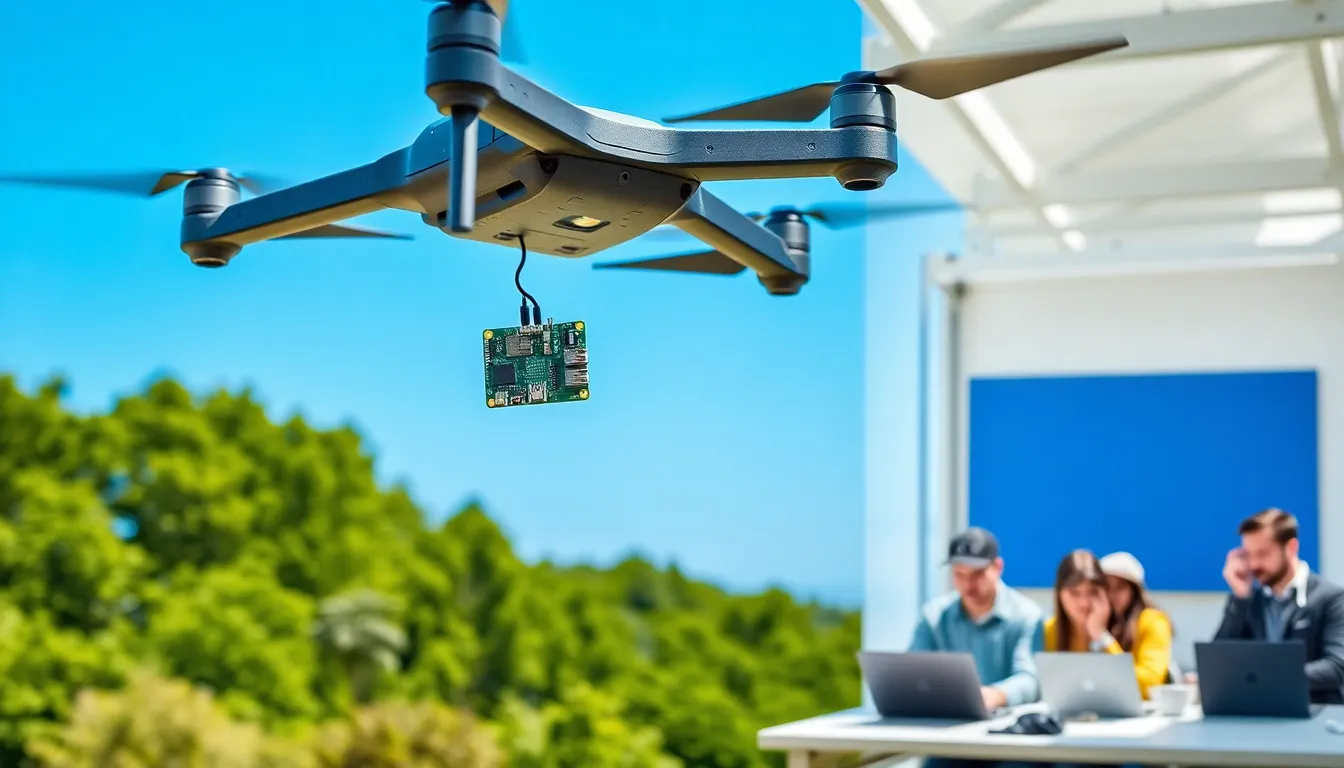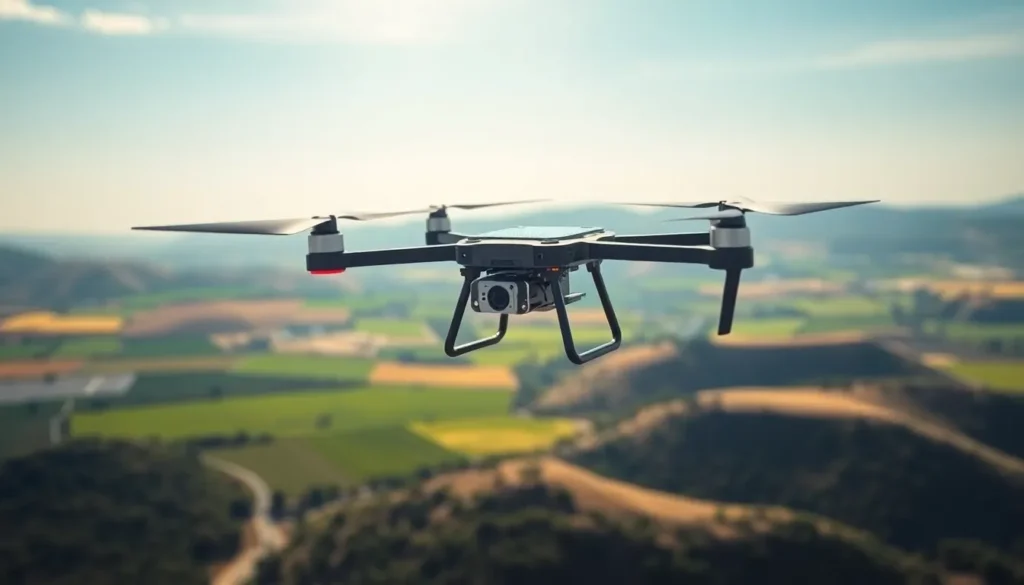When you combine the innovative world of drones with the power of the Raspberry Pi Zero, you’re not just creating interesting tech: you’re launching a thermal drone revolution. Picture this: a small, lightweight device flying high above landscapes, spotting heat signatures like a superhero while being incredibly budget-friendly. If that doesn’t pique your interest, then buckle up. We’re diving into the pixelated universe of Raspberry Pi Zero thermal drones, where creativity meets technology, and where your next DIY project could turn into a path to discovering the heat hidden in everyday environments.
Table of Contents
ToggleOverview of Raspberry Pi Zero in Drones

The Raspberry Pi Zero is a compact computer that packs a punch. Designed for versatility, it’s become a favorite among DIY enthusiasts and tech geeks alike. But what makes it ideal for drones? First off, its minuscule size means it can fit snugly into the tightest of spaces. Also, its lightweight nature helps keep the overall weight of the drone down, which is crucial for flight efficiency.
What’s more, the Raspberry Pi Zero isn’t just a pretty face, it offers a range of connectivity options. With USB, GPIO pins, and even a camera interface, it opens the door to endless possibilities. Whether you’re streaming real-time video or processing data on the fly, the Pi Zero stands ready. This flexibility transforms ordinary drones into mobile technology platforms capable of sophisticated tasks.
Benefits of Using Raspberry Pi Zero for Drone Projects
Why choose the Raspberry Pi Zero for your next drone project? The benefits are plentiful. To start, it’s cost-effective: unlike many high-end flight controllers, the Pi Zero won’t expensive. This makes it an enticing option for hobbyists eager to experiment without financial fears.
Next, let’s talk community. The Raspberry Pi has an extensive user base, meaning you’ll find a myriad of resources, tutorials, and forums at your fingertips. Need help? Chances are, someone else has already encountered the same issue and documented a solution.
Then there’s the question of customization. With programming capabilities, users can tailor the software to their specific needs. Feeling adventurous? You can integrate machine learning algorithms or even other sensors to enhance performance, turning your drone into a truly bespoke flying machine.
Components Needed for Building a Thermal Drone
Before embarking on your Raspberry Pi Zero thermal drone adventure, let’s ensure you have the right components on hand. Here’s a list to get you started:
- Raspberry Pi Zero – The heart of your drone.
- Thermal Camera Module – Key for capturing heat signatures.
- Drone Frame – Choose one that suits your flight needs, lightweight is essential.
- Motors and ESCs – These will make your drone fly (and hopefully not crash.).
- Battery and Charger – A reliable power source keeps you airborne.
- GPS Module – For those who need precise location data.
- Propellers – Go for the right size to match your drone’s design.
- SD Card – To store your programming and captured data.
- Camera Mount – To stabilize and position your thermal camera correctly.
Gathering these components creates the foundational elements your drone will need to soar.
Step-by-Step Guide to Assembling the Thermal Drone
Now, let’s jump into the nitty-gritty of building your thermal drone. Follow these steps to achieve take-off:
- Frame Assembly – Start by assembling your drone frame as per the manufacturer’s instructions. Ensure everything fits snugly.
- Install Motors – Secure the motors onto the frame. Attach the Electronic Speed Controllers (ESCs) to the motors.
- Attach the Raspberry Pi Zero – Use a mounting plate if necessary to keep it secure yet accessible.
- Connect the Battery – Make sure your wiring is correct to prevent any mishaps. Safety first.
- Mount the Thermal Camera – Position it firmly so that it captures a clear field of view.
- Install GPS Module – Attach this if you want to incorporate navigation capabilities.
- Propellers – Fit them onto the motors, and you’re nearly done.
- Final Check – Inspect all connections and make sure everything is in place.
With careful assembly, you’ll be ready to fly fairly soon.
Programming and Configuring the Raspberry Pi Zero
After assembling your drone, it’s time to jump into the programming aspect. Here’s a simplified process:
- Install Raspbian OS – Download and install the Raspbian operating system on your Raspberry Pi Zero using an SD card.
- Set up Wi-Fi or Ethernet – Connecting to the internet will help you download essential software.
- Update Packages – Run a terminal command to update all packages for optimal performance.
- Install Drone Software – Consider using software like DroneKit to help flight operations.
- Configure the Thermal Camera – Warranty it communicates correctly with the Raspberry Pi using specific libraries or drivers.
- Write the Control Program – Craft a simple program to control the drone’s movements, response to data, and camera functions.
- Test and Debug – Run simulations or test flights to ensure everything functions as desired.
Real-World Applications of Thermal Drones
What can you do with a Raspberry Pi Zero thermal drone? The applications are almost endless. In agriculture, farmers deploy thermal drones to assess crop health by detecting temperature variations caused by water stress or disease. This technology helps in troubleshooting issues while optimizing irrigation strategies.
In search and rescue missions, thermal drones can identify individuals lost in the wilderness or trapped under debris by spotting their heat signatures. In real estate and construction, they’re utilized for detecting insulation issues, allowing professionals to save on energy costs.
Even wildlife monitoring is capturing attention, researchers use thermal imaging to track animal populations without intrusive methods. You see? Owning a Raspberry Pi Zero thermal drone not only empowers you with technical skills but opens doors to significant societal impacts.






